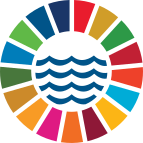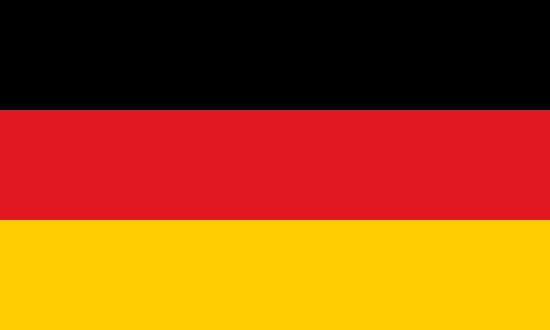Expanding the frontiers and promoting the conservation of global deep-sea habitats
Second Institute of Oceanography, Ministry of Natural Resources, China
(
Academic institution
)
#OceanAction56453
Description
The deep-sea is the largest and most remote biome on the planet. It contains various habitats which are crucial for regulating climate through dynamical processes, i.e., ocean circulation and mixing, and providing resources, i.e., fishery and mineral. Anthropogenic activities in the deep ocean, like deep-sea mining, together with climate change are causing unprecedented stress on these habitats, potentially leading to irreversible changes and loss of biodiversity. Despite the critical role these environments play, there are substantial knowledge gaps regarding their biodiversity and ecosystem functions. To avoid the overexploitation seen in coastal areas, a preventive approach is necessary for deep-sea habitat management. "Digital Deep-sea Typical Habitats (Digital DEPTH)" is one of major scientific plan in the field of deep-sea habitats initiated under the framework of the United Nations Decade of Ocean Science for Sustainable Development (UN Ocean Decade). Through targeted and timely observations, Digital DEPTH will track the status of different types of deep-sea typical habitats, skillfully implement predictions and warnings, manage deep-sea typical habitat resources, and access the impact of natural processes and human activities on deep-sea habitats. It will provide an international cooperation framework for participating states, marine research institutions and other stakeholders. It will establish a systematic process, infrastructure and tools, and develop the international capabilities that can truly integrate the discovery and protection of deep-sea typical habitats to meet the need of fast observations and evaluation, and promote innovation of marine science and technology and partnership by using resources and research infrastructure. Given the broad coverage and ambitious goals of Digital DEPTH, it will involve not only marine observations, but also initiatives including remote sensing, modeling, data analysis and predictive research.
Arab Academy for Science, Technology & Maritime Transport, Smart Village Campus, Egypt, (Academic institution)
Beijing Pioneer HI-Tech, Development Corporation, China ( Private sector)
China Deep Ocean Affairs Administration, Ministry of Natural Resources, China (Government)
China Institute for Marine Affairs, China (Academic institution)
China Minmetals Corporation, China (Private sector)
China Ocean Mineral Resources Research and Development Association, China (Academic institution)
China Oceanic Development Foundation,China (Foundation)
Research Organization for Earth Sciences and Maritime, National Research and Innovation Agency, Indonesia (Academic institution)
Deep-Ocean Stewardship Initiative, Network (Academic institution)
Federal Government of Somalia, Somalia (Government)
First Institute of Oceanography, Ministry of Natural Resources, China (Academic institution)
French Research Institute for Exploitation of the Sea, France (Academic institution)
Geotop, Canada (Academic institution)
Ho Chi Minh City University of Science, Vietnam (Academic institution)
Hong Kong University of Science and Technology, China (Academic institution)
Helmholtz-Zentrum Hereon, Germany (Academic institution)
International Center for Deep Life Investigation, China (Academic institution)
Interdisciplinary Centre of Marine and Environmental Research, Portugal (Academic institution)
Institut National de Recherche Halieutique, Morocco (Academic institution)
Institut National des Sciences et Technologies de la Mer, Tunisia (Academic institution)
Instituto Oceanográfico, Brazil (Academic institution)
Institute of Oceanology, Chinese Academy of Sciences, China (Academic institution)
International Oceanographic Commission Sub Commission for Africa and the Adjacent Island States, Kenya (Intergovernmental organization)
Lake Basin Development Authority, Kenya (Government)
Memorial University of Newfoundland, Canada (Academic institution)
Ministry of Energy and Energy Affairs, Trinidad and Tobago (Government)
National Agricultural Research Institute, Papua New Guinea (Academic institution)
National Deep-Sea Base Management Center, China (Government)
National Deep Sea Center, Ministry of Natural Resources, China (Academic institution)
National Institute of Fisheries Research, Morocco (Academic institution)
National Institute of Meteorology, Ministry of Transportation and Communication, Mozambique (Academic institution)
National Institute of Oceanography and Fisheries, Egypt (Government)
Nigerian Institute for Oceanography and Marine Research, Nigerian (Academic institution)
National Institute of Water and Atmospheric Research, New Zealand (Academic institution)
National Marine Data and Information Service, China (Academic institution)
National Maritime Museum of China, China (Academic institution)
National Satellite Ocean Application Service, China (Government)
National University of Samoa, Samoa (Academic institution)
Ocean University of China, China (Academic institution)
Program for Early Modern Southeast Asia, United States (Academic institution)
PSL University, French (Academic institution)
Raja Ali Haji Maritime University, Indonesia (Academic institution)
Royal Netherlands Institute for Sea Research, Netherlands (Academic institution)
Scripps Institution of Oceanography, United States (Academic institution)
Shirshov Institute of Oceanology of Russian Academy of Sciences, Russia (Academic institution)
The Administrative Centre for China’s Agenda 21, China (Philanthropic organization)
Tel Aviv University, Israel (Academic institution)
The First Institution of Oceanography,China (Academic institution)
Third Institute of Oceanography, Ministry of Natural Resources, China (Academic institution)
University of Algarve, Portugal (Academic institution)
University of Bremen, Germany (Academic institution)
University of California, United States (Academic institution)
Université des Comores, Comoros (Academic institution)
University of Essex, United Kingdom (Academic institution)
Universidade Eduardo Mondlane, Mozambique (Academic institution)
University Félix Houphouët-Boigny, Côte d'Ivoire (Academic institution)
Universiti Malaysia Terengganu, Malaysia (Academic institution)
University of Oxford, United Kingdom (Academic institution)
University of Papua New Guinea, Papua New Guinea (Academic institution)
Université de Toliara, Madagascar (Academic institution)
UCSI University, Malaysia (Academic institution)
University of the Western Cape, Cape Town (Academic institution)
University of the West Indies, Anguilla, Antigua and Barbuda, Bahamas, Barbados, British Virgin Islands, Cayman Islands, Dominica, Grenada, Jamaica, Montserrat, Saint Kitts and Nevis, Saint Lucia, Saint Vincent and the Grenadines and Trinidad and Tobago (Academic institution)
VNIIOkeangeologia, Russia (Academic institution)
Woods Hole Oceanographic Institution, United States (Academic institution)
Western Indian Ocean Marine Science Association, Zanzibar (Academic institution)
Zanzibar Fisheries and Marine Resources Research Institute, Zanzibar (Academic institution)
Zhejiang Lab, China (Academic institution)
Others
SDGS & Targets
Goal 14
Conserve and sustainably use the oceans, seas and marine resources for sustainable development
14.1
By 2025, prevent and significantly reduce marine pollution of all kinds, in particular from land-based activities, including marine debris and nutrient pollution
14.1.1
(a) Index of coastal eutrophication; and (b) plastic debris density
14.2
By 2020, sustainably manage and protect marine and coastal ecosystems to avoid significant adverse impacts, including by strengthening their resilience, and take action for their restoration in order to achieve healthy and productive oceans
14.2.1
Number of countries using ecosystem-based approaches to managing marine areas
14.3
Minimize and address the impacts of ocean acidification, including through enhanced scientific cooperation at all levels
14.3.1
14.4
By 2020, effectively regulate harvesting and end overfishing, illegal, unreported and unregulated fishing and destructive fishing practices and implement science-based management plans, in order to restore fish stocks in the shortest time feasible, at least to levels that can produce maximum sustainable yield as determined by their biological characteristics
14.4.1
14.5
By 2020, conserve at least 10 per cent of coastal and marine areas, consistent with national and international law and based on the best available scientific information
14.5.1
14.6
By 2020, prohibit certain forms of fisheries subsidies which contribute to overcapacity and overfishing, eliminate subsidies that contribute to illegal, unreported and unregulated fishing and refrain from introducing new such subsidies, recognizing that appropriate and effective special and differential treatment for developing and least developed countries should be an integral part of the World Trade Organization fisheries subsidies negotiation
14.6.1
Degree of implementation of international instruments aiming to combat illegal, unreported and unregulated fishing
14.7
By 2030, increase the economic benefits to Small Island developing States and least developed countries from the sustainable use of marine resources, including through sustainable management of fisheries, aquaculture and tourism
14.7.1
Sustainable fisheries as a proportion of GDP in small island developing States, least developed countries and all countries
14.a
Increase scientific knowledge, develop research capacity and transfer marine technology, taking into account the Intergovernmental Oceanographic Commission Criteria and Guidelines on the Transfer of Marine Technology, in order to improve ocean health and to enhance the contribution of marine biodiversity to the development of developing countries, in particular small island developing States and least developed countries
14.a.1
14.b
Provide access for small-scale artisanal fishers to marine resources and markets
14.b.1
Degree of application of a legal/regulatory/policy/institutional framework which recognizes and protects access rights for small‐scale fisheries
14.c
Enhance the conservation and sustainable use of oceans and their resources by implementing international law as reflected in United Nations Convention on the Law of the Sea, which provides the legal framework for the conservation and sustainable use of oceans and their resources, as recalled in paragraph 158 of "The future we want"
14.c.1
Number of countries making progress in ratifying, accepting and implementing through legal, policy and institutional frameworks, ocean-related instruments that implement international law, as reflected in the United Nations Convention on the Law of the Sea, for the conservation and sustainable use of the oceans and their resources
SDG 14 targets covered
| Name | Description |
|---|---|
| 14.1 | By 2025, prevent and significantly reduce marine pollution of all kinds, in particular from land-based activities, including marine debris and nutrient pollution |
| 14.2 | By 2020, sustainably manage and protect marine and coastal ecosystems to avoid significant adverse impacts, including by strengthening their resilience, and take action for their restoration in order to achieve healthy and productive oceans |
| 14.3 | Minimize and address the impacts of ocean acidification, including through enhanced scientific cooperation at all levels |
| 14.4 | By 2020, effectively regulate harvesting and end overfishing, illegal, unreported and unregulated fishing and destructive fishing practices and implement science-based management plans, in order to restore fish stocks in the shortest time feasible, at least to levels that can produce maximum sustainable yield as determined by their biological characteristics |
| 14.5 | By 2020, conserve at least 10 per cent of coastal and marine areas, consistent with national and international law and based on the best available scientific information |
| 14.6 | By 2020, prohibit certain forms of fisheries subsidies which contribute to overcapacity and overfishing, eliminate subsidies that contribute to illegal, unreported and unregulated fishing and refrain from introducing new such subsidies, recognizing that appropriate and effective special and differential treatment for developing and least developed countries should be an integral part of the World Trade Organization fisheries subsidies negotiation |
| 14.7 | By 2030, increase the economic benefits to Small Island developing States and least developed countries from the sustainable use of marine resources, including through sustainable management of fisheries, aquaculture and tourism |
| 14.a | Increase scientific knowledge, develop research capacity and transfer marine technology, taking into account the Intergovernmental Oceanographic Commission Criteria and Guidelines on the Transfer of Marine Technology, in order to improve ocean health and to enhance the contribution of marine biodiversity to the development of developing countries, in particular small island developing States and least developed countries |
| 14.c | Enhance the conservation and sustainable use of oceans and their resources by implementing international law as reflected in United Nations Convention on the Law of the Sea, which provides the legal framework for the conservation and sustainable use of oceans and their resources, as recalled in paragraph 158 of "The future we want" |
Deliverables & Timeline
Resources mobilized
Partnership Progress
Feedback
Action Network

Timeline
Entity
SDGs
Other beneficiaries
Ocean Basins
Communities of Ocean Action
More information
Countries






















Headquarters
Contact Information
Yuntao, Professor, Second Institute of Oceanography, Ministry of Natural Resources, China

